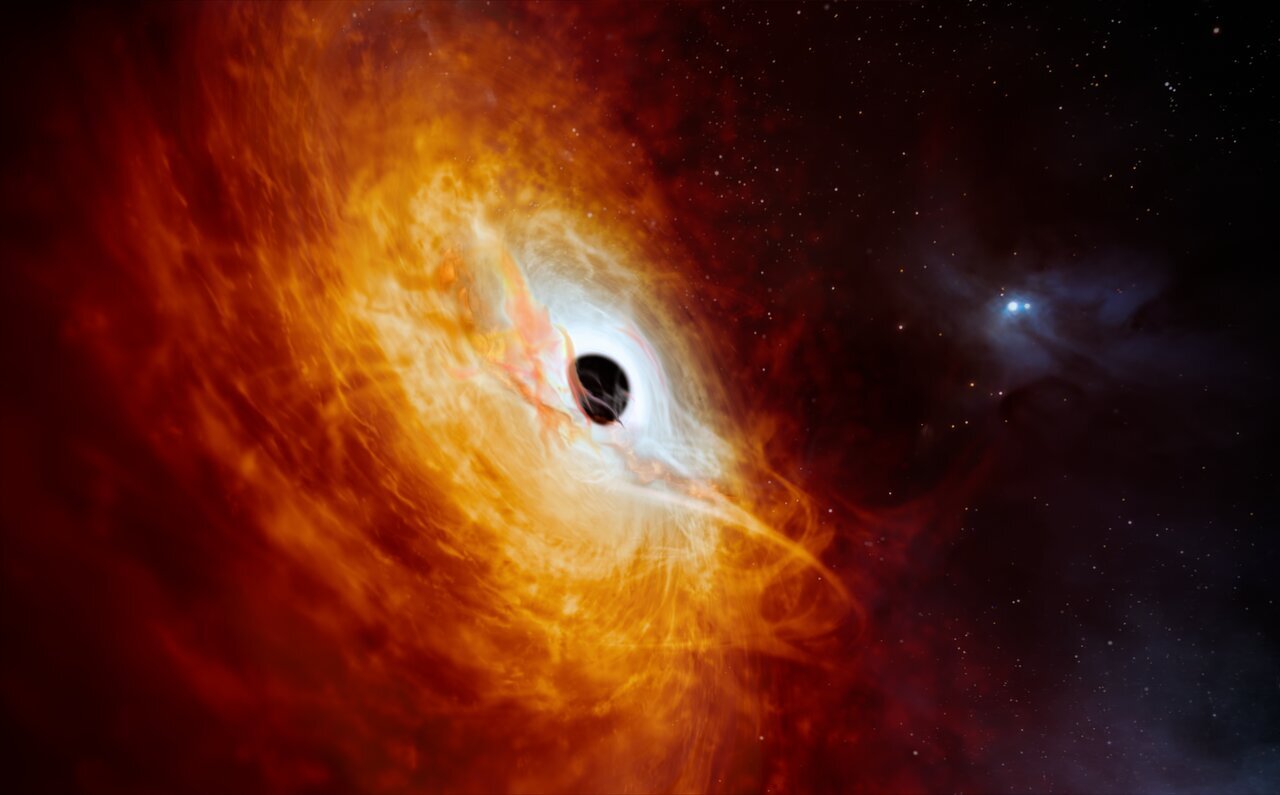The cosmos continually unfurls its enigmatic layers, revealing wonders that elicit both awe and scholarly intrigue. Among its myriad manifestations, quasars stand out as some of the most fascinating astronomical entities. These luminous beacons, emerging from the heart of distant galaxies, derive their brilliance from supermassive black holes accreting vast quantities of matter. Recent astronomical advancements have afforded scientists the most profound glimpse yet into this captivating phenomenon, unveiling quasar activity that challenges our understanding of the early universe.
A quasar, or “quasi-stellar object,” epitomizes an intriguing paradox. These celestial objects exude energy equivalent to thousands of galaxies, yet they remain absurdly compact. The mechanism behind their luminosity is rooted in gravitational forces. As matter spirals towards the event horizon of a supermassive black hole, it accelerates and heats up, emitting intense radiation across the electromagnetic spectrum. This radiation spans from radio waves through to gamma rays, making quasars among the most detectable objects in the universe. They serve as luminous markers, illuminating the universe’s fabric and offering insights into its formative epochs.
The fascination with quasars predominantly emanates from their historical context and cosmological implications. The majority of observed quasars are situated billions of light-years away, implying that we are witnessing them as they existed in the universe’s nascent stages, approximately 10 to 12 billion years ago. This temporal perspective allows astronomers to probe the conditions prevalent in the early universe, addressing critical questions surrounding galaxy formation, black hole growth, and the evolution of structure. Given their immense distances, the light we observe from them has traversed vast expanses of space and time, echoing back to an epoch when the universe was markedly different from what we now peruse from our terrestrial vantage point. Thus, quasars serve not solely as remnants of ancient light but as profound historical archives.
Recent discoveries have unveiled an unprecedented quasar, a record-breaking entity that stands as a testament to the capabilities of cutting-edge astronomical technologies. The announcement of this discovery has incited considerable discourse within the scientific community, prompting inquiries into the underlying physics that enable such phenomena. Notably, this spectacle comes with striking implications about the instantaneous mass growth of black holes. Observations indicate that this newly identified quasar, existing at an extraordinary redshift, may challenge prevailing models of black hole episodic growth and cosmic evolution.
One compelling aspect of this discovery lies in its potential to redefine our comprehension of the quasar timeline. If we consider current models of black hole formation, the rapid growth required for a black hole to develop into a quasar necessitates significant quantities of surrounding matter and stellar material. Conventional wisdom suggests that such accumulation would occur over extended timelines, yet the characteristics of this quasar imply an expedited formation process. This may necessitate a revision of the mechanisms by which primordial black holes interact with their environments or possibly hint at the existence of a new class of astrophysical events that bypass traditional limits on growth.
The quasar’s remarkable luminosity offers another intriguing avenue of exploration: the interplay between galaxies and their supermassive black holes. As gas and dust fall into the gravitational clutches of a black hole, the resulting accretion processes are inherently violent and consequential. Feedback mechanisms triggered by these processes, such as powerful jets and outflows, can impact star formation rates within galaxies, leading to a cascade of evolutionary repercussions. By elucidating these complex interactions, scientists garner a clearer understanding of the star formation history in the early universe, thereby shedding light on the delicate balance that governs cosmic evolution.
Moreover, the excitement surrounding this discovery transcends the boundaries of mere scientific inquiry; it resonates with a broader societal fascination with the cosmos. Humanity’s enduring quest to comprehend the universe has spurred philosophical and existential contemplations throughout history. Each revelation, including those pertaining to quasars, contributes to a collective narrative about not only the nature of matter and energy but also the essence of existence itself. The interplay between the minuscule atomic structures that constitute our being and the grandeur of distant cosmic phenomena evokes a sense of connectedness that is profoundly compelling.
As researchers continue to unravel the complexities associated with this new quasar, it compels a re-evaluation of existing paradigms. With advancements in observational techniques, particularly those associated with ground-based and space telescopes, the understanding of astronomical phenomena is shifting rapidly. This transition is marked by an increasing capacity to probe ever-fainter objects at unprecedented distances. Consequently, new data can lead to the identification of additional quasars, each serving as a vital instrument in the quest to delineate the universe’s timeline and structural evolution.
In conclusion, the discovery of an extraordinary quasar encapsulates a myriad of themes intrinsic to our exploration of the universe. It illuminates the processes governing the formation and evolution of galaxies, offers profound insights into stellar and black hole dynamics, and invites a deeper reflection on humanity’s place within the cosmos. As we continue to gaze into the depths of space and time, it becomes clear that such celestial artifacts are not mere points of light; rather, they are the vibrant threads woven into the expansive tapestry of existence, revealing the intricate narratives of cosmic life. With each quasar unveiled, we move a step closer to deciphering the profound mysteries that govern our universe.












